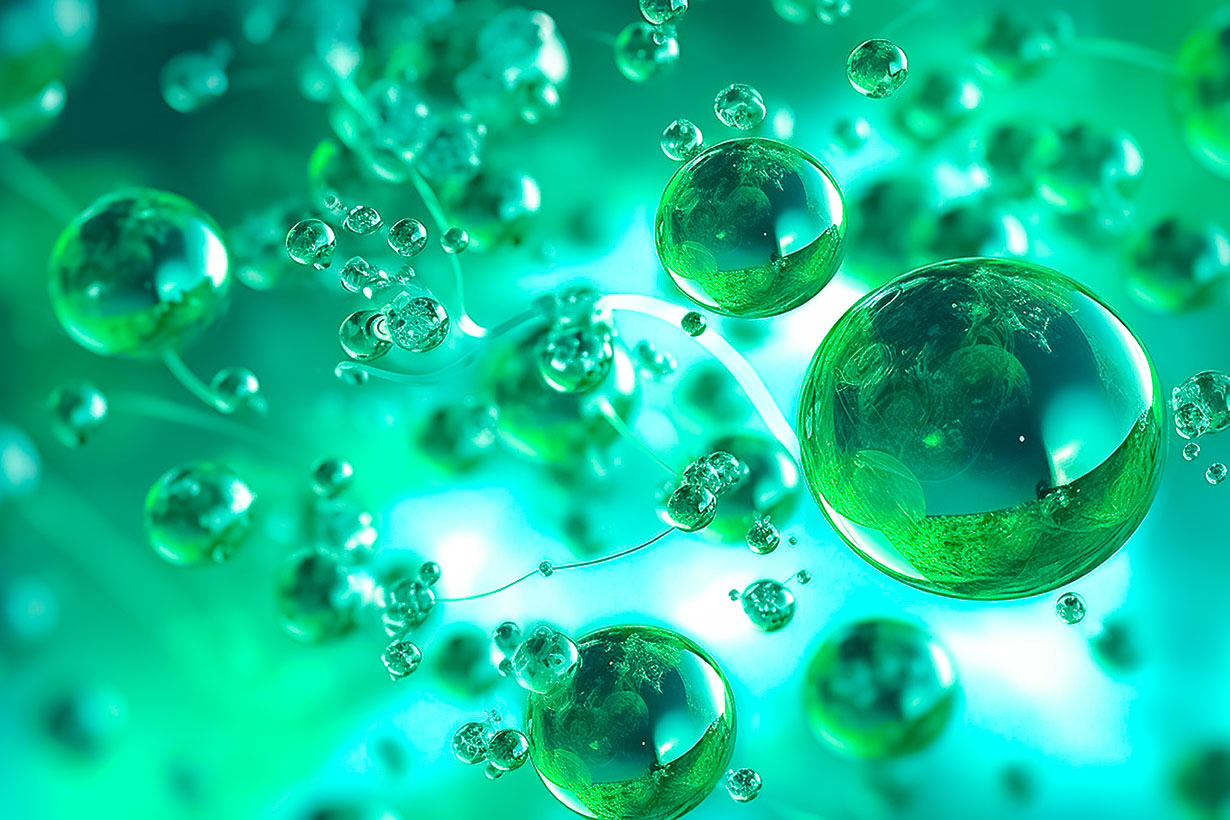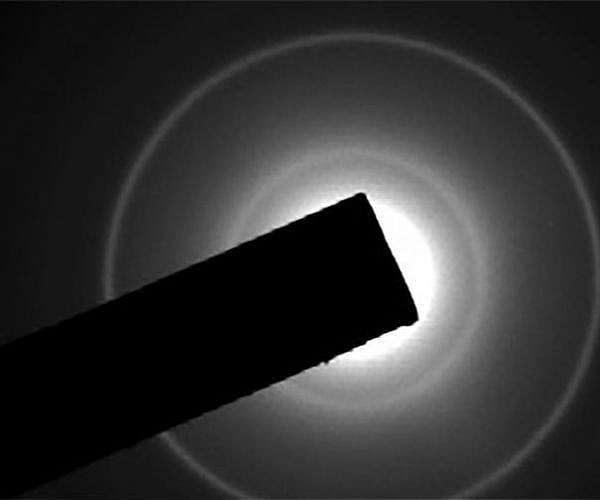CLOSE
About Elements
为了美好的未来,
传播支撑社会的科技
TANAKA是“贵金属”的专家,为世界提供创造“社会价值”的“制造”。
“Elements”是主要提供符合我们的业务及价值观的有关“科技”和“可持续发展”
等方面信息的网络媒体。
在急速发生范式转换的现代,我们将不断传播促进实现更加美好的“社会”和富饶“地球”的未来的启示。

Drexel’s titanium oxide material lets sunlight drive green hydrogen production

Clean energy plans, including the U.S. Infrastructure Investment Act’s “Clean Hydrogen Road Map,” are counting on hydrogen as a fuel of the future. But current hydrogen separation technology is still falling short of efficiency and sustainability goals. As part of ongoing efforts to develop materials that could enable alternative energy sources, researchers in Drexel University’s College of Engineering have produced a titanium oxide nanofilament material that can harness sunlight to unlock the ubiquitous molecule’s potential as a fuel source.
The discovery offers an alternative to current methods that generate greenhouse gas and require a great deal of energy. Photocatalysis, a process that can split hydrogen from water using only sunlight, has been explored for several decades, but has remained a more distant consideration because the catalyst materials enabling the process can only survive it for a day or two, which limits its long-term efficiency and, as a result, its commercial viability.
Drexel’s group, led by College of Engineering researchers Michel Barsoum, PhD, and Hussein O. Badr, PhD, in collaboration with scientists from the National Institute of Materials Physics in Bucharest, Romania, recently reported its discovery of photocatalytic titanium oxide-based, one-dimensional nanofilament material that can help sunlight glean hydrogen from water for months at a time. Their article “Photo-stable, 1D-nanofilaments TiO2-based lepidocrocite for photocatalytic hydrogen production in water-methanol mixtures,” published in the journal Matter, presents a sustainable and affordable path for creating hydrogen fuel, according to the authors.
Researchers from Drexel University and the National Institute of Materials Physics in Romania, have discovered a titanium oxide-based photocatalytic material that could open a new path for green hydrogen production.
“Our titanium oxide one-dimensional nanofilaments photocatalyst showed activity that is substantially higher – by an order of magnitude – than its commercial titanium oxide counterpart,” Hussein said. “Moreover, our photocatalyst was found to be stable in water for 6 months – these results represent a new generation of photocatalysts that can finally launch the long-awaited transition of nanomaterials from lab to market.”
Barsoum’s group discovered hydroxides-derived nanostructures (HDNs) – the family of titanium oxide nanomaterials, to which the photocatalytic material belongs – two years ago, as it was working out a new process for making MXene materials, which Drexel researchers are exploring for a number of applications. Instead of using the standard, caustic hydrofluoric acid to chemically etch out the layered two-dimensional MXenes from a material called a MAX phase, the group used an aqueous solution of a common organic base, tetramethylammonium hydroxide.
But rather than producing a MXene, the reaction produced thin, fibrous titanium oxide-based strands – that the team would come to find possessed the ability to facilitate the chemical reaction that splits hydrogen out of water molecules when exposed to sunlight.
“Titanium-oxide materials have previously demonstrated photocatalytic abilities, so testing our new nanofilaments for this property was a natural part of our work,” he said. “But we did not expect to find that not only are they photocatalytic, but they are extremely stable and productive catalysts for hydrogen production from water-methanol mixtures.”
The group tested five photocatalyst materials – titanium oxide-based HDNs, derived from various low-cost and readily available precursor materials – and compared them to Evonik Aeroxide’s titanium oxide material, called P25, which is widely accepted as the photocatalyst material closest to commercial viability.
Each material was submerged in a water-methanol solution and exposed to ultraviolet-visible light produced by a tunable illuminator lamp that mimics the spectrum of the sun. The researchers measured both the amount of hydrogen produced and duration of activity in each reactor assembly, as well as the number of photons from the light that produced hydrogen when they interacted with the catalyst material – a metric for understanding the catalytic efficiency of each material.
They found that all five titanium oxide-based HDNs photocatalysts performed more efficiently at using sunlight to produce hydrogen than the P25 material. One of them, derived from binary titanium carbide, is 10 times more efficient than P25 at enabling photons to split off hydrogen from the water.
This improvement is quite significant on its own, the team reports, but an even more significant finding was that the material remained active after more than 180 days of exposure to the simulated sunlight.
“The fact that our materials appear to possibly be thermodynamically stable and photochemically active in water-methanol mixtures for extended durations cannot be overemphasized,” Hussein said. “Since our material is not costly to make, easy to scale up, and incredibly stable in water, its applications in various photocatalytic processes become worth exploring.”
The next step for the research is better understanding why the material behaves this way, so it can be further optimized as a photocatalyst. The team’s current theory posits that the one-dimensional nature and theoretical high surface area of the material contribute to its sustained activity, but additional testing is needed to confirm these suggestions.
The group is also working to find other additives, aside from methanol, to serve as “hole quenchers” – chemicals that prevent the water-splitting reaction from reversing course, which is a common occurrence due to the somewhat chaotic nature of photocatalytic reactions.
The results are so promising that the group has founded a green hydrogen startup around the technology and is working with the Drexel Office of Innovation and the National Science Foundation’s Innovation Corps to move toward commercializing it.
“We are very excited about the possibilities of this discovery,” Barsoum said. “The world needs massive new clean fuels that can supplant fossil fuels. We believe this material can unlock the potential of green hydrogen.”
In addition, the group is exploring a number of other applications for HDNs, including using them in batteries, solar cells, water purification and medical treatments. Their ability to be easily and safely produced in large quantities, sets HDNs apart from other nanomaterials, which opens them to a variety of possible uses, according to Hussein.
“Our HDNs family of nanostructures continue to impress the very different communities with whom we are collaborating. These titanium oxide nanofilaments can be used for number of applications including water purification, dye degradation, perovskite solar cells, lithium-ion and lithium-sulfur batteries, urea dialysis and breast cancer therapy, among many more.”
Research Report:Photo-stable, 1D-nanofilaments TiO2-based lepidocrocite for photocatalytic hydrogen production in water-methanol mixtures
This article was from SpaceDaily.com and was legally licensed through the Industry Dive Content Marketplace. Please direct all licensing questions to legal@industrydive.com.
![]()










